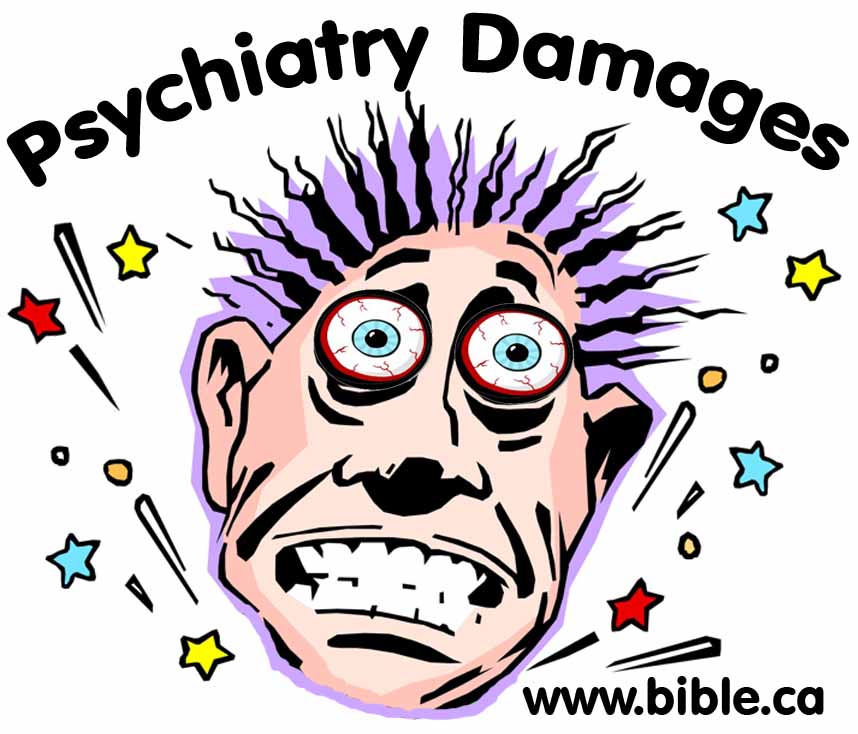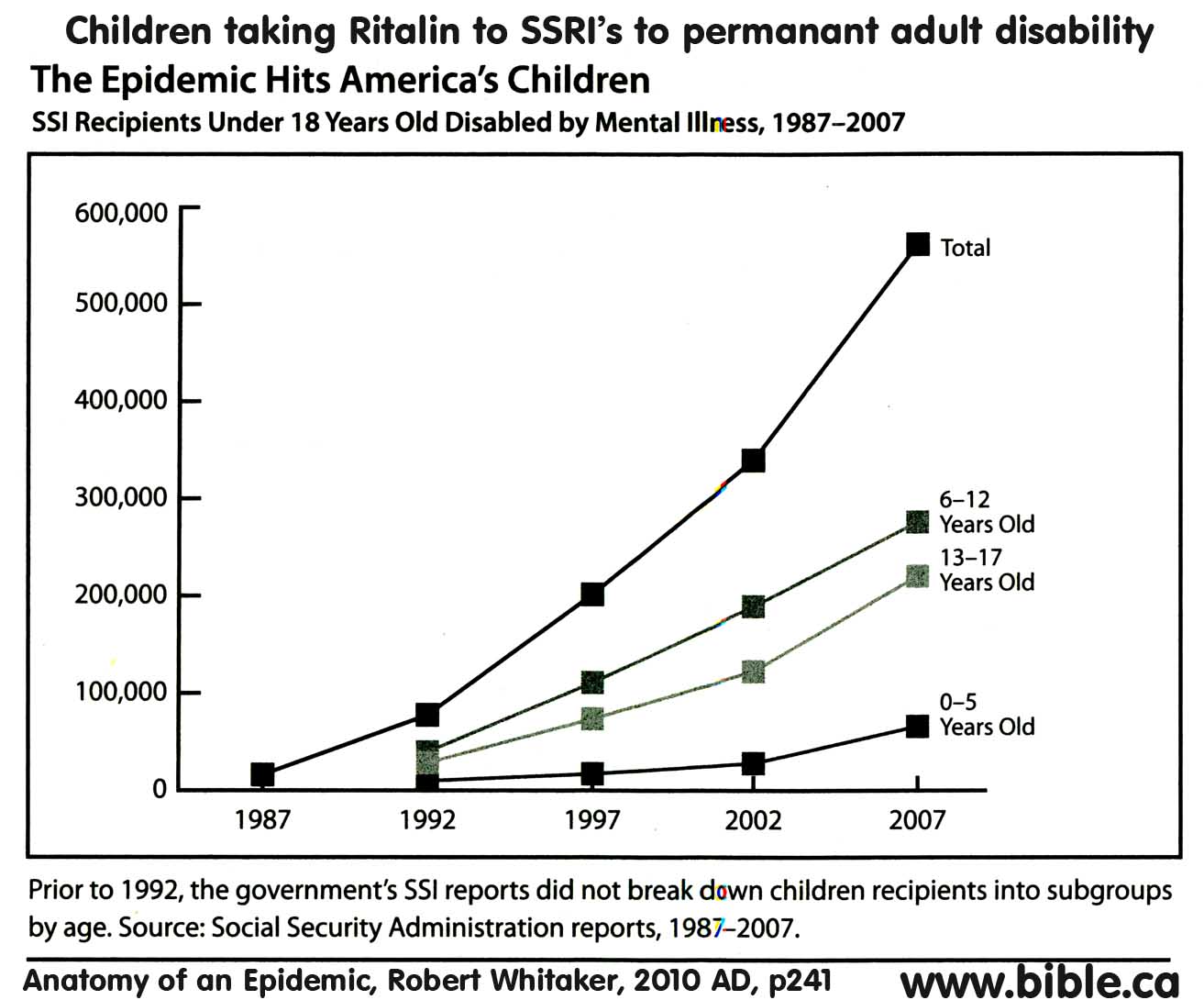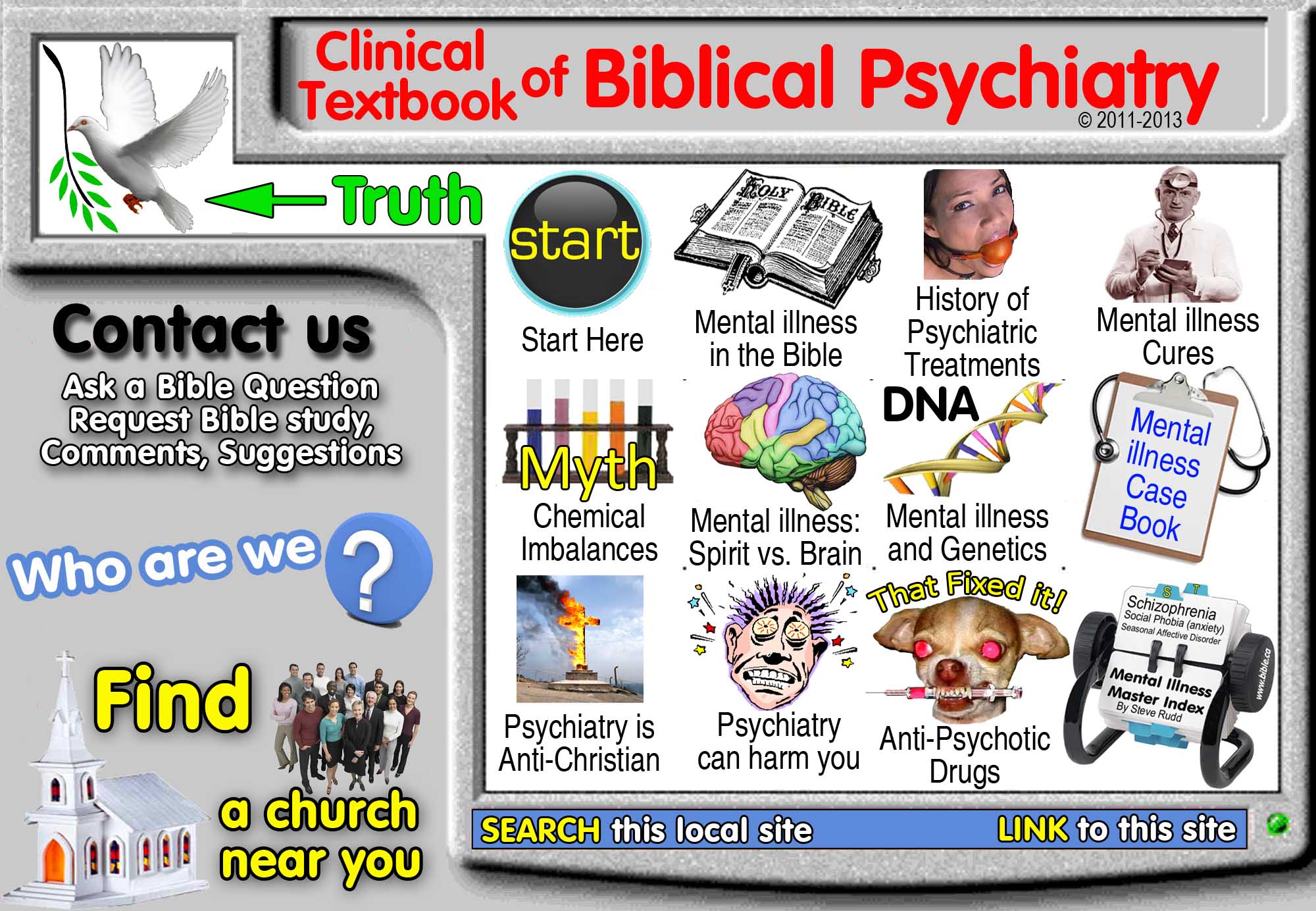The iatrogenic drug epidemic that leads to permanent psychiatric welfare.
Billions of Wasted Tax dollars on psychiatric Disability welfare
|
|
Psychiatry welfare follows psychiatric drug use. The iatrogenic drug epidemic that leads to permanent psychiatric welfare. |
Introduction:
1. It is well established that all psychiatric drugs cause permanent brain damage. The longer of use, the greater the damage.
2. Psychiatric drugs create disablement by suppressing executive function and creating apathy, indifference and lethargy.
3. When anyone is on psychiatric drugs it directly hinders their performance at work marking them for future layoffs and being passed over for promotions.
4. Usually psychiatric drugs make it so a person cannot work at all.
a. "This was a study of 1,281 employees in Canada who went on short-term disability due to depression. Those who took an antidepressant were more than twice as likely to go on to longterm disability." [Source: Dewa, C. “Pattern of antidepressant use and duration of depression-related absence from work:' British Journal of Psychiatry 183 (2003): 507-13.] (Anatomy of an Epidemic, Robert Whitaker, 2010 AD, p 167)
5. Herein lay the iatrogenic drug epidemic that leads to permanent psychiatric welfare that costs taxpayers billions that would be best left in their pockets.
6. We are in favour of banning all psychiatric drugs because they don't work and the huge cost savings of masses of disabled psychiatric patents suddenly invading the job bank like a movie where all the zombies suddenly all came back to life!
7. This huge iatrogenic drug epidemic that leads to permanent psychiatric welfare creates employment for the very ones who are causing the epidemic: the mental health industry.
A. The iatrogenic drug epidemic that leads to permanent psychiatric welfare.
1. The first psychiatric drug, Chlorpromazine was created on December 11, 1950. This marks the beginning of the modern era of mass drugging of psychiatric patients.
2. Make no mistake, historically John Monro, chief mad doctor at Bedlam asylum (1752-1792 AD) was on record for saying the best cure for insanity was opium! Of course! It drugged them into a zombie like stupor and brought them under control.
3. But the wholesale drugging of new and powerful drugs that created chemical imbalances in the brain, interfering with normal brain function began in 1950 and gradually increased until it mushroomed into a nuclear explosion in the 1970's.
4. The result is that psychiatric disability follows directly the rate of psychiatric drug prescription.
a. “the more medications the patients received, the greater the psychosocial functioning impairment.” (V. Balanza-Martinez, “Persistent cognitive dysfunctions in bipolar I disorder and schizophrenic patients,” Psychotherapy and Psychosomatics 74 (2005): 113-19; A Martinez-Aran, “Functional outcome in bipolar disorder,” Bipolar Disorders 9 (2007): 103-13.)
b. “Our findings suggest that antipsychotic medication is not the treatment of choice, at least for certain patients, if one is interested in long-term clinical improvement,” Rappaport wrote. “Many unmedicated-while-in-hospital patients showed greater long-term improvement, less pathology at follow-up, fewer hospitalizations, and better overall functioning in the community than patients who were given chlorpromazine while in the hospital. [Rappaport, “Are there schizophrenics for whom drugs may be unnecessary or contraindicated?” International Pharmacopsychiatry 13 (1978): 100-11.] (Anatomy of an Epidemic, Robert Whitaker, 2010 AD, p102)
c. “With illegal and legal drugs greasing the road to bipolar illness, it is little wonder that a rare disorder in 1955 has become commonplace today. SSRIs took the country by storm in the 1990s, and from 1996 to 2004, the number of adults diagnosed with bipolar illness rose 56 percent. At the same time, psychiatry's steady expansion of diagnostic boundaries over the past thirty-five years has helped fuel the bipolar boom too. .” (Anatomy of an Epidemic, Robert Whitaker, 2010 AD, p 181)
5. Before the era of Psychiatric drugs schizophrenics would return to normal productive life after 5 years.
a. "Here's the data. In a study conducted by the NIMH, 62 percent of first-episode psychotic patients admitted to Warren State Hospital in Pennsylvania from 1946 to 1950 were discharged within twelve months. At the end of three years, 73 percent were out of the hospital. … A study of 216 schizophrenia patients admitted to Delaware State Hospital from 1948 to 1950 produced similar results. Eighty-five percent were discharged within five years, and on January 1, 1956—six years or more after initial hospitalization- 70 percent were successfully living in the community. [J. Cole, editor, Psychopharmacology (Washington, DC: National Academy of Sciences, 1959), p 142, 386.] … "Meanwhile, Hillside Hospital in Queens, New York, tracked 87 schizophrenia patients discharged in 1950 and determined that slightly more than half never relapsed in the next four years. [N. Lehrman, “Follow-up of brief and prolonged psychiatric hospitalization,” Comprehensive Psychiatry 2 (1961): 227-40.] During this period, outcomes studies in England, where schizophrenia was more narrowly defined, painted a similarly encouraging picture: Thirty-three percent of the patients enjoyed a “complete recovery,” and another 20 percent a “social recovery,” which meant they could support themselves and live independently. [R. Warner, Recovery from Schizophrenia (Boston: Routledge & Kegan Paul, 1985), p 74.] (Anatomy of an Epidemic, Robert Whitaker, 2010 AD, p 92)
6. After schizophrenics began to be mass medicated with drugs more, not less people were in institutional care.
a. "It is also important to note that the arrival of Thorazine did not improve discharge rates in the 1950s for people newly diagnosed with schizophrenia, nor did its arrival trigger the release of chronic patients. In 1961, the California Department of Mental Hygiene reported on discharge rates for all 1,413 first-episode schizophrenia patients hospitalized in 1956, and it found that 88 percent of those who weren't prescribed a neuroleptic were discharged within eighteen months. Those treated with a neuroleptic—about half of the 1,413 patients—had a lower discharge rate; only 74 percent were discharged within eighteen months. This is the only large-scale study from the 1950s that compared discharge rates for first-episode patients treated with. and without drugs, and the investigators concluded that “drug-treated patients tend to have longer periods of hospitalization. . . . The untreated patients consistently show a somewhat lower retention rate.” [L. Epstein, “An approach to the effect of ataraxic drugs on hospital release rates,” American Journal of Psychiatry 119 (1962): 246-61.] (Anatomy of an Epidemic, Robert Whitaker, 2010 AD, p 93)
B. Psychiatric drugging of children creates permanent adult disability welfare
1. See our page on ADHD and Ritalin
2. The drugging of children with any psychiatric drug, including Ritalin, is wholesale child abuse.
3. Ritalin that is prescribed for ADHD makes the self-seeking unionist teachers happy because little Johnny is a compliant zombie, but his academic performance did not improve. How could it, when you are removing his exuberant zeal for life, the sparkle in his eye and robbing him of his above average creativity.
a. "Finally, in 2002, Canadian investigators conducted a meta-analysis of the literature, reviewing fourteen studies involving 1,379 youths that had lasted at least three months, and they determined that there was “little evidence for improved academic performance.” [R. Schachar, “Attention-deficit hyperactivity disorder,” Canadian Journal of Psychi-atry 47 (2002): 337-48.] (Anatomy of an Epidemic, Robert Whitaker, 2010 AD, p225)
4. Ritalin's iatrogenic road to SSRI's and permanent disability:
a. “Today, bipolar illness is a far cry from what it once was. Prior to the psychopharmacology era, it had been a rare disorder, affecting perhaps one in ten thousand people. Now it affects one in forty (or by some counts, one in twenty). And even though most patients today—at initial diagnosis—are not nearly as ill as the hospitalized patients of the past, their long-term outcomes are almost incomprehensibly worse." (Anatomy of an Epidemic, Robert Whitaker, 2010 AD, p192)
5. Ritalin's iatrogenic road to depression, Bipolar and permanent disability:
a.
“Today, bipolar illness is a far cry from what it once was. Prior to the
psychopharmacology era, it had been a rare disorder, affecting perhaps one in
ten thousand people. Now it affects one in forty (or by some counts, one in
twenty). And even though most patients today—at initial diagnosis—are not
nearly as ill as the hospitalized patients of the past, their long-term
outcomes are almost incomprehensibly worse." (Anatomy of an Epidemic,
Robert Whitaker, 2010 AD, p192)

Conclusion:
1. Parents, teachers and doctors warn children that marihuana use "greases the road" as a gateway drug to cocaine, heroin and crack etc.
2. Ritalin is a gateway drug that leads children into SSRI's AND cocaine, heroin and crack.
3. Children's Aid Society drug a very high percentage the children in their care with Ritalin, antidepressants and SSRI's. This represents state sponsored and endorsed criminal child abuse.
4. The iatrogenic path from Ritalin to hard illicit drug use is well documented. Just ask any adult on psychiatric disability whose parents (or Children's Aid Society) and he will tell you his personal story if you care to ask. Most of the people milling around the streets begging for cigarette money while living quietly in half-way houses were drugged with Ritalin as children and drugged as adults with SSRI's
5. The use of psychiatric drugs in 1950 is the historical marker that began the iatrogenic epidemic:
a. Before the use of psychiatric drugs in 1950, schizophrenics would recover on their own after 5 years and re-enter productive social life and work full time supporting themselves.
b. After the use of psychiatric drugs in 1950, schizophrenics became permanently disabled and stayed on psychiatric welfare as long as they continued taking drugs.
6. All psychiatric drugs should be banned because mental illness and schizophrenia are behaviours not diseases whose origin is the human spirit not the fleshly brain.
7. Drugging schizophrenics to fix psychotic behaviour is like smashing the mother board on a computer in order to fix a computer virus.
8. Drugging children with any psychiatric drugs is child abuse.
9. See our page on ADHD and Ritalin
By Steve Rudd: Contact the author for comments, input or corrections.
Send us your story about your experience with modern Psychiatry


